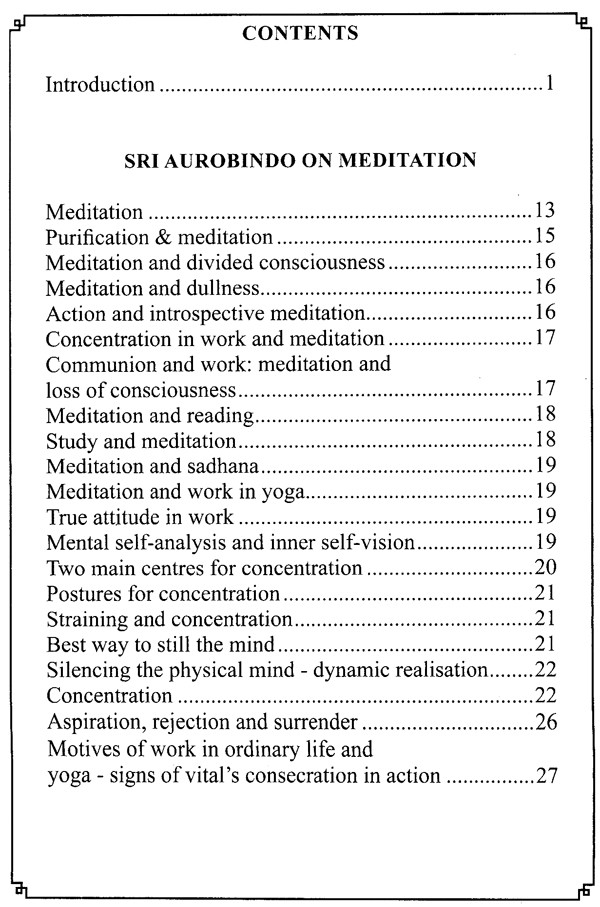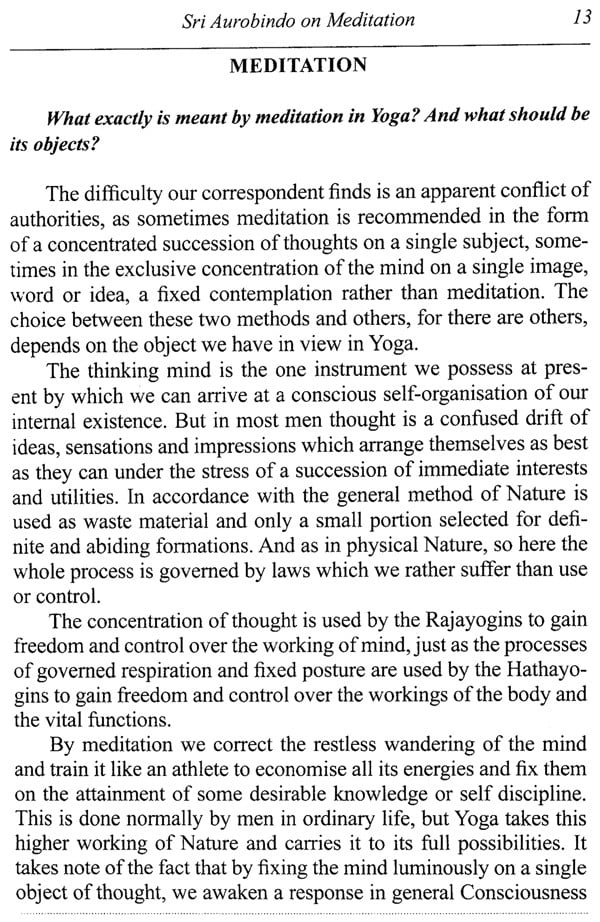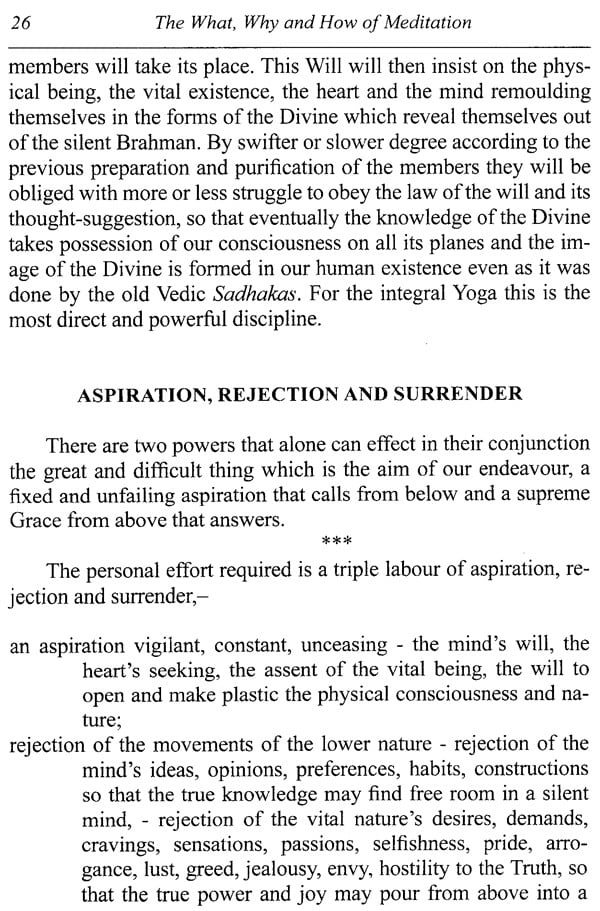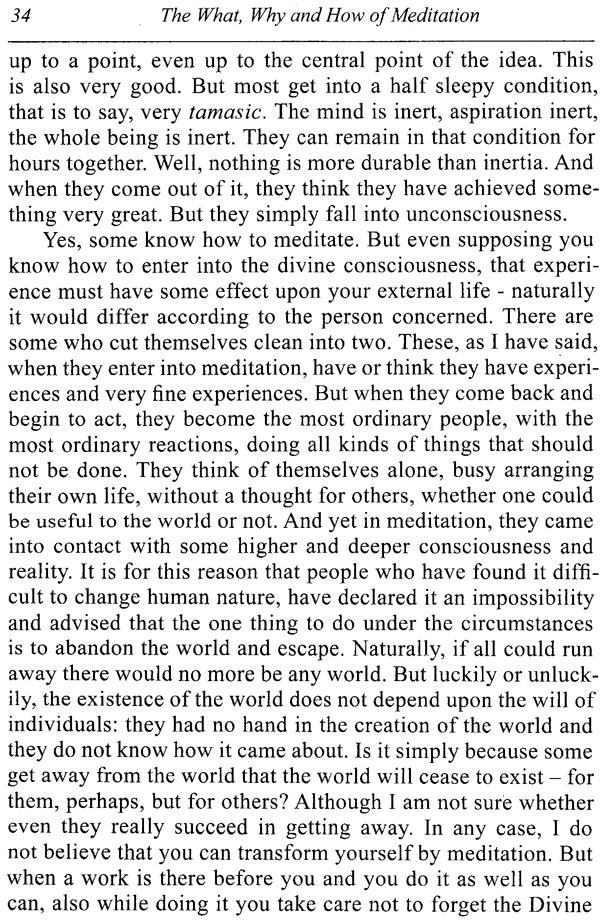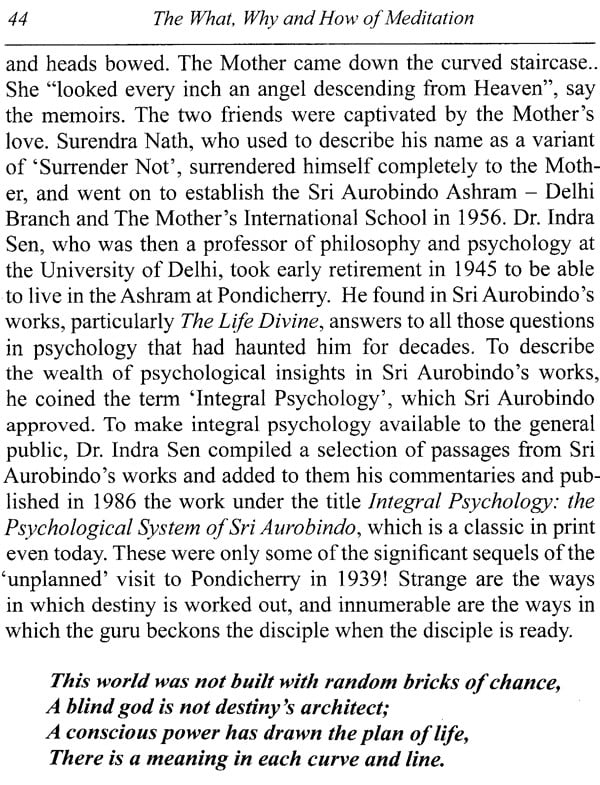
The What, Why and How Of Meditation In The Words Of Sri Aurobindo and The Mother
Book Specification
| Item Code: | NBZ407 |
| Author: | Indra Sen and Ramesh Bijlani |
| Publisher: | Sri Aurobindo Ashram |
| Language: | English |
| Edition: | 2015 |
| Pages: | 44 |
| Cover: | PAPERBACK |
| Other Details | 7.00 X 5.00 inch |
| Weight | 60 gm |
Book Description
In yoga, the aim of meditation is to go deep within and establish a conscious contact with our divine essence, which Sri Aurobindo and the Mother have called the psychic being. The psychic being is that part of the individual which is closest to the Divine, and therefore has attributes of the Divine. The Divine knows all, and therefore the psychic being can give the individual access to knowledge that is beyond the reach of the mental consciousness. It is through the psychic being that mystics have received answers to existential problems such as `who I am' and 'why I am here on earth'. It is again because of the all-knowing character of the psychic being that it can tell us what the best choice is in a situation where many alter-native courses of action are available.'
The Divine is not only all-knowing, it is also all-powerful. It is because of the all-powerful character of the Divine that if we decide to pay heed to the choice made by the psychic being, we also acquire the courage to translate the choice into action. It is this courage that makes it possible to translate into action choices that appear 'impossible' or 'ridiculous' to the ordinary mental consciousness. Thus, the psychic being helps us transcend our limitations; it enhances our capacities. Meditation facilitates making a conscious contact with the psychic being because although it is the most luminous part of the being, it shuns limelight. In contrast, the emotional part of the being (the vital), and the intellect (the mental) are very noisy. Feelings tend to dominate the mind, and thoughts cloud the mind so effortlessly and effectively that the poor psychic being is hardly noticeable. Meditation helps in making these noisy parts of the being quiet. When the mind becomes quiet, the cloud concealing the psychic being disappears, and the sun-like bright psychic being becomes visible. It is something like a cluttered table on which something that we are looking for is there, but we just cannot find it. When the clutter is cleared, the concealed object is discovered, and we wonder why we had earlier almost given it up as 'lost'.
Book's Contents and Sample Pages
